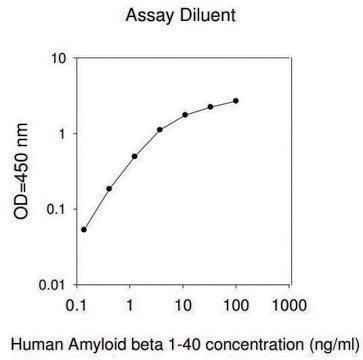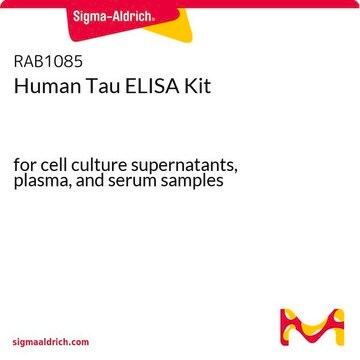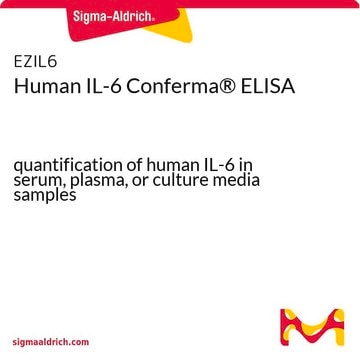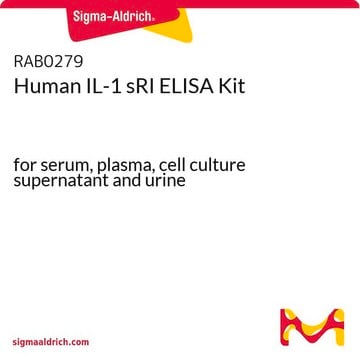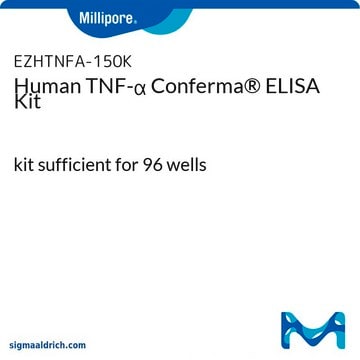EZHS40
Human Amyloid β40 ELISA Kit
measures and quantifies Amyloid β40 levels in 50 μL CSF, cell culture supernatent or plasma
Sinônimo(s):
Amyloid-beta protein 40
About This Item
Produtos recomendados
Nome do produto
High Sensitivity Human Amyloid β40 ELISA, This High Sensitivity Human Amyloid β40 ELISA is used to measure & quantify Amyloid β40 levels in Neuroscience research.
Nível de qualidade
reatividade de espécies
human
embalagem
kit of 1 × 96 wells
Parâmetros
50 μL sample volume (Overnight assay)
assay range
sensitivity: 6.0 pg/mL
(50 μl sample size)
standard curve range: 16-500 pg/mL
técnica(s)
ELISA: suitable
entrada
sample type plasma (K2 EDTA)
sample type serum
sample type cerebrospinal fluid (CSF)
aplicação(ões)
research use
método de detecção
colorimetric (450nm/590nm)
Condições de expedição
wet ice
temperatura de armazenamento
2-8°C
Informações sobre genes
human ... APP(351)
Categorias relacionadas
Descrição geral
Especificidade
Aplicação
Neuroscience
Alzheimer′s Disease
Armazenamento e estabilidade
Outras notas
Exoneração de responsabilidade
recomendado
Palavra indicadora
Warning
Frases de perigo
Declarações de precaução
Classificações de perigo
Aquatic Chronic 3 - Met. Corr. 1 - Skin Sens. 1
Código de classe de armazenamento
8A - Combustible corrosive hazardous materials
Certificados de análise (COA)
Busque Certificados de análise (COA) digitando o Número do Lote do produto. Os números de lote e remessa podem ser encontrados no rótulo de um produto após a palavra “Lot” ou “Batch”.
Já possui este produto?
Encontre a documentação dos produtos que você adquiriu recentemente na biblioteca de documentos.
Active Filters
Nossa equipe de cientistas tem experiência em todas as áreas de pesquisa, incluindo Life Sciences, ciência de materiais, síntese química, cromatografia, química analítica e muitas outras.
Entre em contato com a assistência técnica
